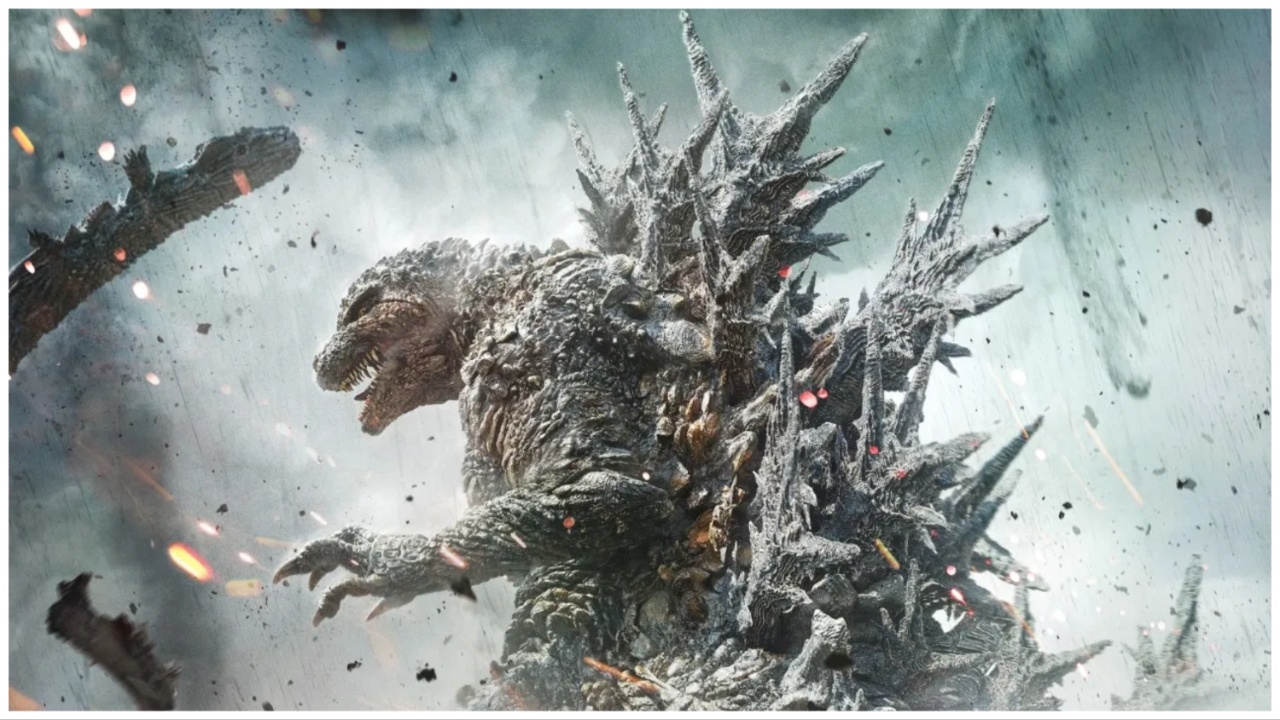‘Godzilla Minus One’ Is the Best Film for the Times We Live In

I will admit, my perspective on this film will be heavily skewed. When I asked Toho International about attending a press screening, I was instead invited to the US premiere. It was my first premiere and was a remarkable experience in an unparalleled theater.
Still, I will strive to judge the movie fairly.
Despite being the 34th film in a 64-year-old franchise, Godzilla Minus One is neither a sequel nor a prequel. It’s also not connected to Warner Bros. Monsterverse films. It is a reboot, in a new timeline, which makes it an excellent place to start for newcomers and longstanding fans alike.
Godzilla Minus One is a period piece as much as it is a Godzilla film and succeeds brilliantly at both. Set in post-WWII Japan, the film is not about the might of world power conquering nature. Instead, it’s about people recovering from war, only to be hit by something even worse.
The film is markedly different from the American Monsterverse movies. In America, Godzilla is frequently the hero, fighting to restore balance to the world by killing Kaiju who threatens the natural order. But this film reminds the audience that he is a metaphor for nuclear power, which does not discriminate between right and wrong or balance any natural order. The film notes how the Americans mutate Godzilla and then abandon Japan to deal with the fallout of their actions. It’s an unfortunate but eternally poignant note on how U.S. foreign policy has a history of picking fights and then leaving innocents with the consequences of our actions.
Godzilla’s creature design is terrifying and you can see director Takashi Yamazaki’s history of VFX work throughout the film. GMO does not have the budget or scale of the Monsterverse movies, but this Godzilla is arguably the most terrifying version ever put on screen. Godzilla’s tail is used in attacks just as much as his claws or jaws, which makes it feel like he can and will attack from any angle. His spines extend when charging his atomic breath, only to retract at the moment of attack, truly making Godzilla feel like a living weapon. At the same time, much like the shark from Jaws, Godzilla is just as scary when he is offscreen. Yamazaki does a great job of building dread and anticipation for the monster.
As a period piece, the film confronts Japan’s actions during the war, addressing the effect they had on the Japanese people. It notes how the Japanese government prioritized victory at all costs, cheapening lives with poorly armored tanks, no ejection seats on planes, and kamikaze tactics.
Due to this cultural history, the film does not frame an unwillingness to die as weakness or cowardice. Instead, it reflects on the value of life when a community is dealing with tragedy after tragedy, aggravated by an apathetic government. The film shows that many Japanese citizens are understandably disillusioned with dying for a country that left them in the lurch after the war.
Still, that makes it all the more powerful when people rally, not out of nationalistic pride or duty, but because they want to do the right thing and protect their home. It’s not just veterans and pilots coming back for one last battle. The film sees people defending their friends and families and working for a better tomorrow. There are no small roles or small actors in this film, and you get the feeling that every character is the protagonist of their own story.
Forgiveness is another important facet of the film, as the main character, Kōichi Shikishima, deals with his own survivor’s guilt. Ryunosuke Kamiki plays the character brilliantly as a man who wants to move on but is so broken by his guilty conscience that he sabotages his happiness. The film notes that forgiving yourself and others is an important part of the healing process and is vital to survival.
Also, while the film is male-dominated, the women are not wallflowers. They are active characters also working to rebuild their lives after the war, clinging to any form of hope they can. The lead actress, Minami Hamabe, portrays an amazing amount of strength and resilience. When her character Noriko makes a decision, she stands by it and will not be swayed from the course of action she knows is right.
I won’t spoil anything for you, but trust me when I say that Godzilla Minus One is just the film we need for the complicated, sometimes hopeless times we live in. The film reminds its audience that there is always hope as long as you are willing to fight for a better tomorrow.
Godzilla Minus One hits U.S. theaters on November 29, 2023.
(featured image: Toho International)
Have a tip we should know? tips@themarysue.com